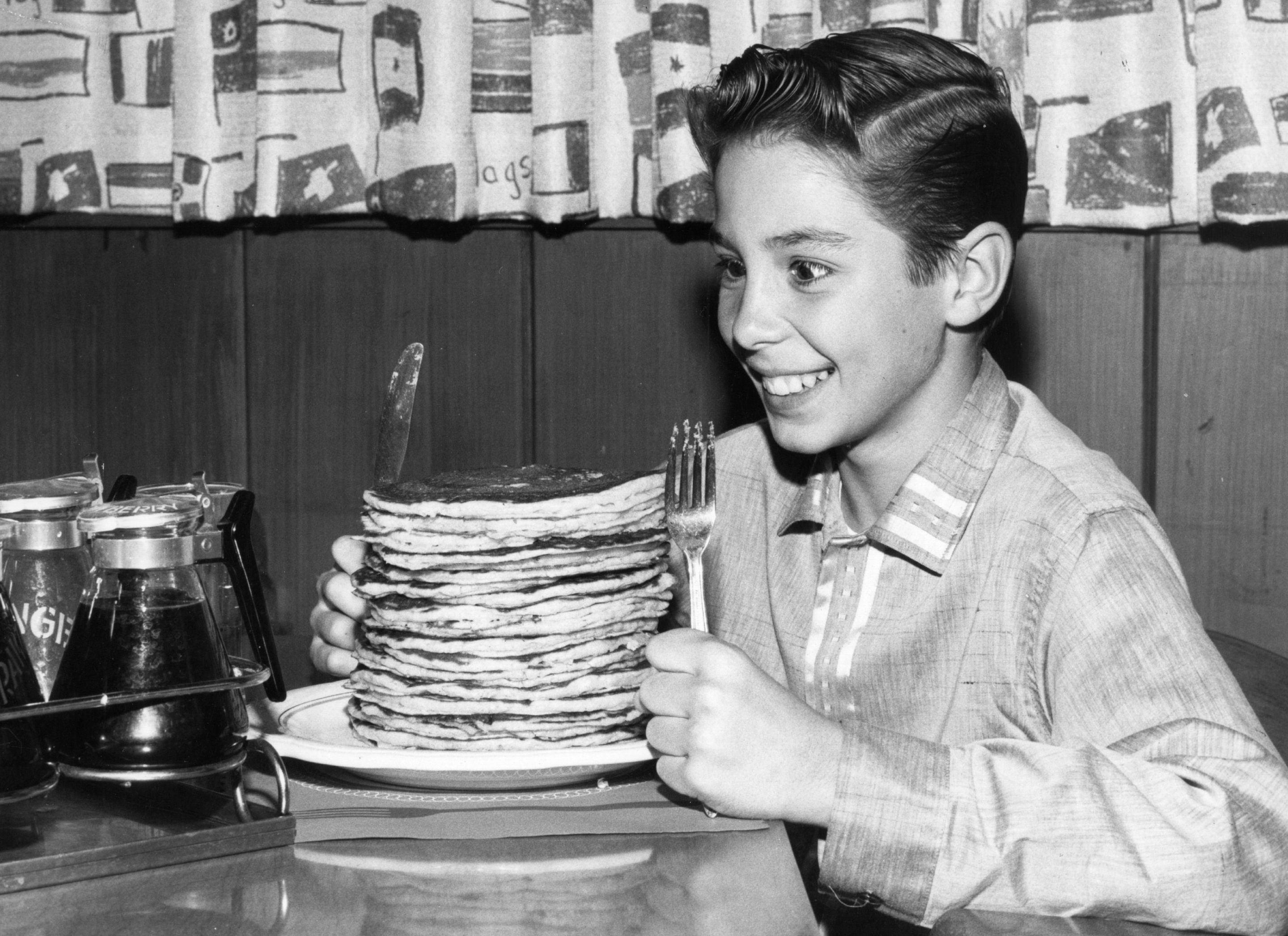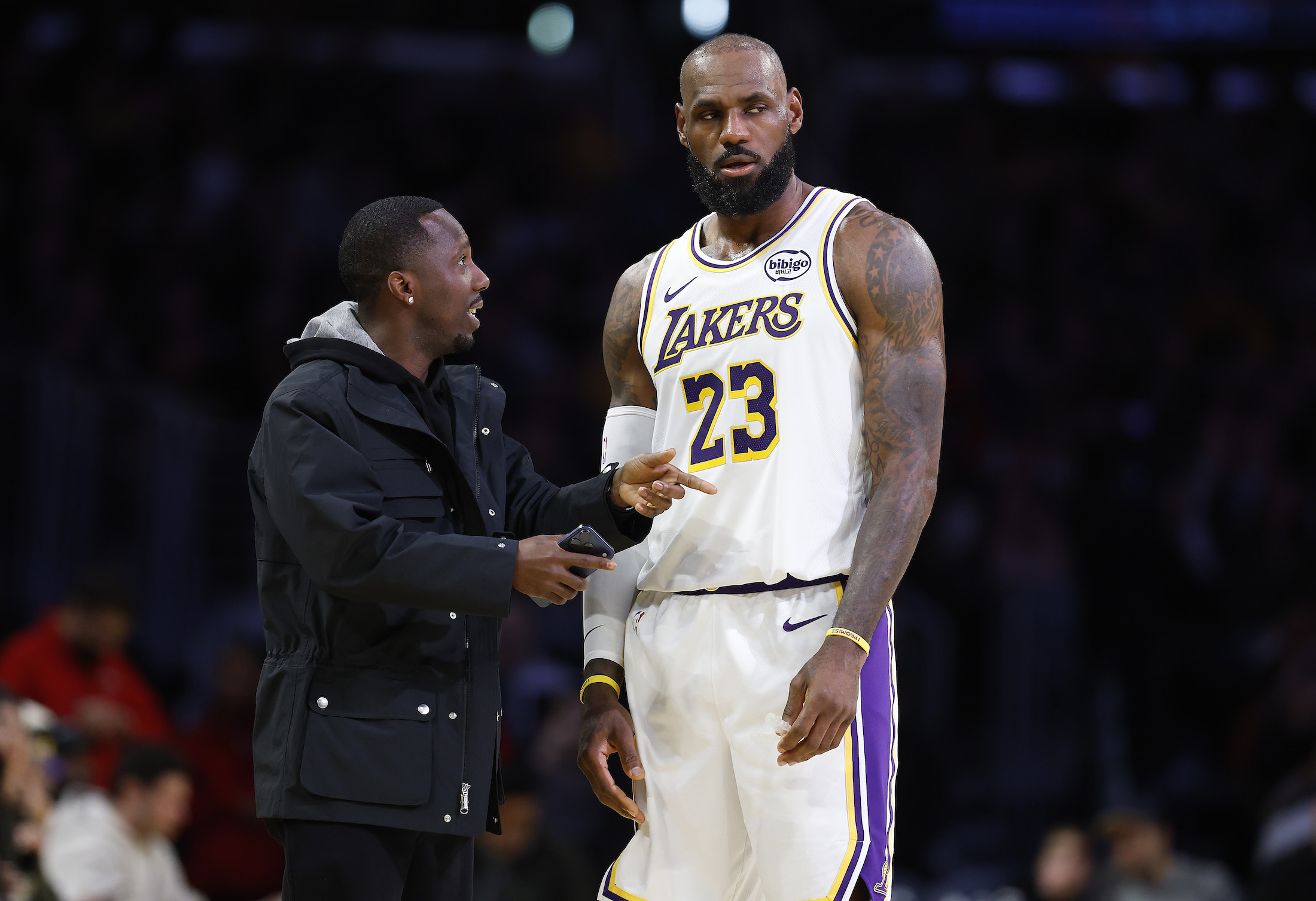A few months ago, a vacant storefront in my neighborhood finally reopened as a restaurant called Poppy’s that serves breakfast foods and espresso drinks. Starting the day with friends and a big table of food feels like the ultimate luxury to me, so I’ve been to this restaurant several times. Their pancakes are perhaps the best pancakes I’ve ever had. They’re thick and fluffy and just a little crispy on the edges. The inside stays warm and each bite is pillowy and perfect.
I struggle to let myself order the pancakes. Usually, I go with an omelet or avocado toast. Sometimes it’s because I want them. But more often, it’s because the savory options are more “balanced.” They have more protein and fiber, and are probably lower in calories, too. It’s because I’m following The Rules.
To have been an American teenage girl in the aughts was to live within a culture with an unvarnished obsession with thinness. The low-rise pants that only looked good on trim and narrow hips, the extremely thin woman on America’s Next Top Model who was called “huge,” the indignity of requiring a size larger than 5.
When I was a teenager, I was convinced that every part of me was wrong: my family, my personality, and yes, my body. For my 16th birthday, I got a subscription to Seventeen and studied each issue. The Seventeen girl was beautiful and confident. She had enough money to shop the trends and she had enough friends to go out every weekend and went on dates with boys (always boys) every Friday night. I thought that if I learned The Rules, I would become the kind of girl who always had plans and never felt out of place.
Each issue of Seventeen reliably included a diet and workout spread sandwiched between fashion spreads and articles about flirting with boys. The spreads had titles like “Get Tight from Tush to Toe!” and “Your Best Beach Bod!” and promised full body makeovers in 2–4 weeks, as long as you followed the plan. The plan always included a diet. There were breakfasts to leave you full all day, healthy swaps for “indulgent” foods, and guides to portioning out restaurant food so you wouldn’t overeat at the mall, or at Olive Garden, or ever.
I memorized The Rules. I studied restaurant menus for their calorie counts and avoided salad dressing (full of sugar!!!) and potato chips (I can’t control myself around them!!). I did crunches and planks while I watched TV and flexed my abs during class. No moment was wasted when it could be used on my body.
It feels crucial to say here that I am a thin person, and I always have been. I am genetically small in both stature and weight, and exercise was a central part of my adolescence, and by high school, I was a three-season varsity athlete who worked out for at least an hour every day. So my experiences with fatphobia are from the position of someone who was always afraid of becoming fat, which objectively was unlikely to ever happen. I said things that hurt people in my life. Once, when I was 18, I joked about ballooning to a size 8, which at the time was unimaginably large to me. The friend I was with didn’t laugh and said in a small voice, “I’m a size eight.” There was a big part of me that believed that any weight gain was the result of a personal and moral failure, and that if my body ever changed, it would be because I had failed, too.
Fatphobia made me a bad friend, but it also made me hate myself. I can count the years of my life it has stolen. The hours I stood in front of mirrors, pinching my hips and my waist and my arms. The long runs I took when I didn’t have anything left in me, and the days when I didn’t run and beat myself up over it. The weeklong experiments in veganism and “clean eating” that were just restriction in disguise, and the thousands of photos of myself I can’t look at because I hate everything about them.
It’s not the aughts anymore, but since then the pendulum of public opinion on women’s bodies swung toward “wellness” and “curves” and then back to overt thinness. In 2012, Seventeen vowed not to alter the images that appear in its magazine, and in a quick spin through its website’s health and wellness section I couldn't find a single diet or workout-related article. But in 2023, teen magazines have been eclipsed by social media. My own TikTok For You page is filled with “pilates princesses” who swear that pilates is THE way to get toned, lean muscles, and other women swearing by the power of the 12-3-30 treadmill workout.
The concept of body positivity, which has roots in the fat liberation movement of the 1960s, gained traction on social media in the 2010s. The hashtag #bodypositivity has 35.5 billion views on TikTok, with posts from both fat and thin creators talking about what body positivity looks like for them. But when I type “body positivity” into my TikTok search bar, it auto-fills the phrase “body positivity is toxic.” One of the top posts is a video from a man complaining about the model Tess Holliday being featured on the cover of Cosmopolitan: “It’s like brainwashing people into thinking you’re like actually bad if you’re in shape.”
Celebrities known for their curvy or fat bodies have dropped the weight, and rich skinny people are shooting up with a diabetes drug that makes them shit their brains out. Our society is not built to be humane toward people in large bodies, and that’s reflected in the clothing sizes available in stores to the sizes of chairs in restaurants, movie theaters, and on airplanes. I do not begrudge anyone who simply wants to be treated with dignity, and who chooses to use Ozempic, and drugs like it, to achieve that.
But for many people—for me, certainly—the pursuit of thinness isn’t actually about being thin. It’s about control. When something in my career didn’t go the way I wanted, I’d punish myself with no dinner. When a global pandemic forced me indoors for several months and ambulance sirens kept us up all night, I ran six miles a day and started doing Chloe Ting at-home workouts. When I don’t live up to my values in the way I talk to my friends or family or my partner, I start to see flaws in my body until my mental image of myself looks more like a Cubist portrait than a woman. It’s easier to stop eating than it is to confront the unfixable problems that are actually eating at me.
After a particularly troubling bout of restriction last year, I started seeing a dietician once a week to work through my disordered eating habits. It’s a massive privilege I can afford because of my income and health insurance. She asks me infuriating questions like “what is ‘healthy’ food?” and “how do you distinguish exercise from other forms of movement?” She helps me build meals I feel excited to eat and gives me homework like “eat all the Archie Moore’s french fries” and “play video games when you start to pick apart your body.” I realized how deeply The Rules were ingrained in my brain when I explained to her why it can be so stressful to eat out. I told her about how Seventeen taught me that I can only eat six-inch pizza slices, and that I should always consider cutting my meals in half. She was amazed at all of The Rules I could remember.
“That takes up so much space in your brain,” she said.
I asked if it was possible to replace The Rules, and she said yes. We create new rules. We went on to talk about what makes a carrot inherently more healthy than a french fry (all of my attempts were shot down, so don’t even try), and talked about how health is about balance and variety in the aggregate. Then she told me about a high-school friend of hers who always ordered pancakes at the diner they went to after parties. When she drizzled syrup onto her pancake and cut into it, she would say to herself, “Body by pancake.”
I laughed when she told me this, but the phrase has a talismanic quality and it stuck with me through the night. Body by pancake. I thought of what I love so much about Poppy’s pancakes: their softness, their warmth, the joy I feel every time I eat one. I want to be filled with those qualities.






